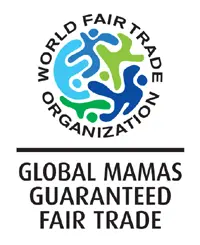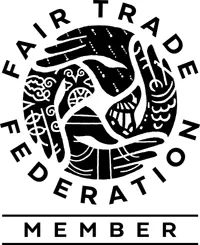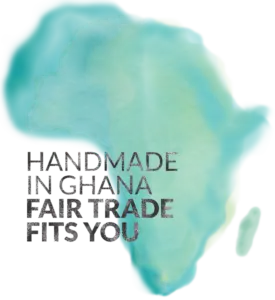BATIK | BATIK PROCESS | ORGANIC COTTON | AFRICAN BATIK HISTORY

THE BATIK PROCESS AT GLOBAL MAMAS
The history of batik has evolved across cultures. Although the underlying concept of using layers of dye with a wax resist remains the same, how each artist achieves their finished textile may vary. The process we share here explains the materials and steps used by many Global Mamas batikers. Some steps are specific to our organization such as the laminated batik design templates we use to ensure consistency from one small workshop to the next. Other aspects of the process such as how the stamps are carved, or how the wax is boiled off may be determined by what works best for the individual Mama to get the results she wants.
Textile Design | Stamping & Dyeing | De-Waxing & Cleanup | Quality Control

Textile Design
Our textile design process is unique in that various stakeholders have the opportunity to contribute. A design volunteer or member of the Global Mamas design team first conducts trend research for the upcoming season. Staying mindful of the batiking tools and techniques we use, they dream up a range of new ideas.
Working closely with skilled batikers near our Cape Coast office the design team develops samples in a wide variety of colorways- experimenting with various dye recipes and layers of color. Each year during our annual Design Competition Global Mamas and Quality Control employees have the opportunity to submit their own batik designs with the winner receiving a cash reward and inclusion in our catalog.


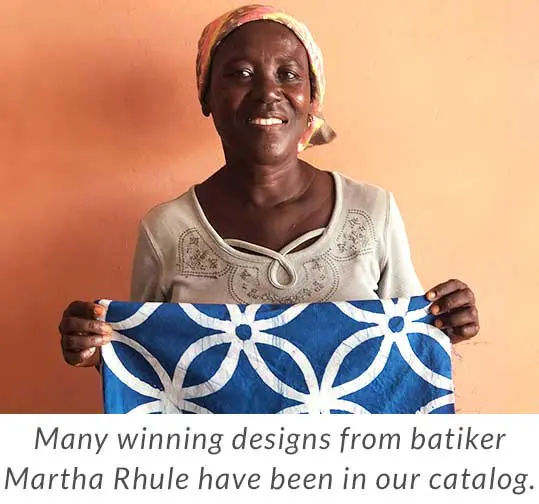

Stamping & Dyeing
Carving the Stamp
- The first step in creating a new batik design is carving the stamp. Batikers carefully transfer the design onto a block of foam using the stencil provided.
- Using a sharp blade the batiker carves away excess foam. Some designs require 2-3 different stamps to be carved for different layers and colors.
Preparing the Dye
- None of the colors we use come ready made. Every shade comes with a specific recipe created by our design team that must be mixed according to specific measurements.
- Batikers purchase necessary dyes at the local market together with caustic soda and hydrosulphite to fix the color in the fabric and improve final appearance.
- All of our products use azo free dyes to attain the signature bright colors Global Mamas is known for. In preparing the dye and working with the wet dye batikers use long gloves to prevent skin contact. Face masks are worn to prevent inhalation of the dye powder and dyes are mixed in well-ventilated, often outdoor, settings.
Stamping the Fabric
- With stamps and dye prepared, it’s time to heat the wax. Global Mamas batikers use premixed batik wax which is a mix of paraffin wax and beeswax. Beeswax adheres well to the cotton and has greater flexibility. Paraffin is added because it cracks easily- creating the ‘crackle’ effect characteristic of batiks.
- After spreading out the organic cotton yardage provided by the Global Mamas, stamping may begin. Many Mamas use a table covered in vinyl or a layer of wax to prevent the cotton sticking to their work surface.
- The foam stamp is partially submerged in the hot wax until the bottom is fully saturated. Excess wax is shaken off to ensure a clean print. The stamp is placed with great precision on the fabric based on instructions provided by the design team for how the pattern will repeat.
- If the stamp didn’t print well or provide a thick enough layer of wax, batikers may go back in with a foam ‘pen’ to correct any issues.
Dyeing the Fabric
- When the printed wax has cooled the fabric is ready to be submerged in the dye bath. The fabric can either be folded neatly and then submerged, or the batiker can use a “rolling” technique. The amount of time the fabric stays in the dye bath depends on the intended strength of color.
- When ready, batikers lift the yardage from the dye pot, allowing it to drip before hanging it on a clothesline or laying it out on a flat area of land to dry. Although some crackling is fine there is no wringing or squeezing the fabric until all layers of dyeing are complete.
- To create additional layers of color, once the cotton has dried after the first dye bath the process may be repeated- stamping new wax designs on top of the first layer, then dyeing again. Batik always begins with the lightest color and ends with the darkest.

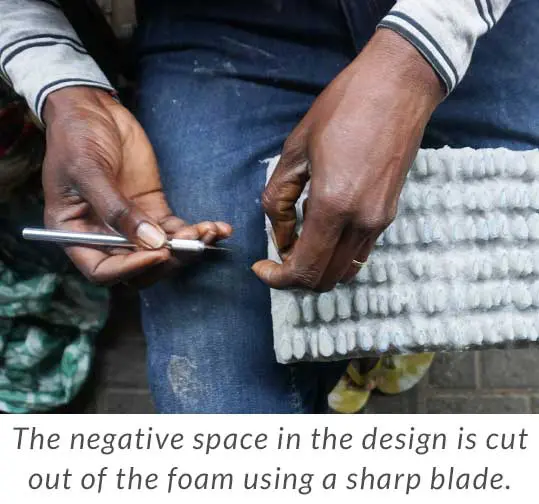


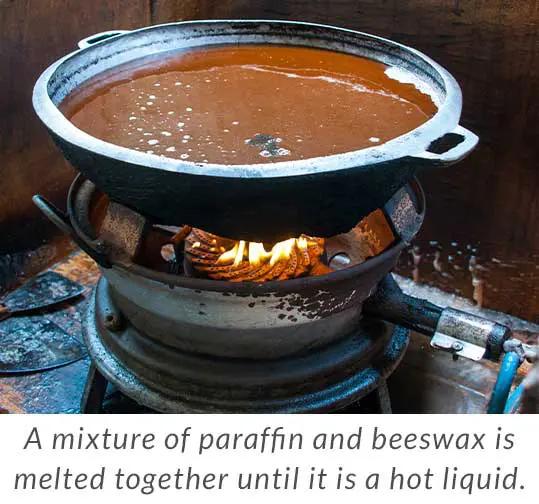
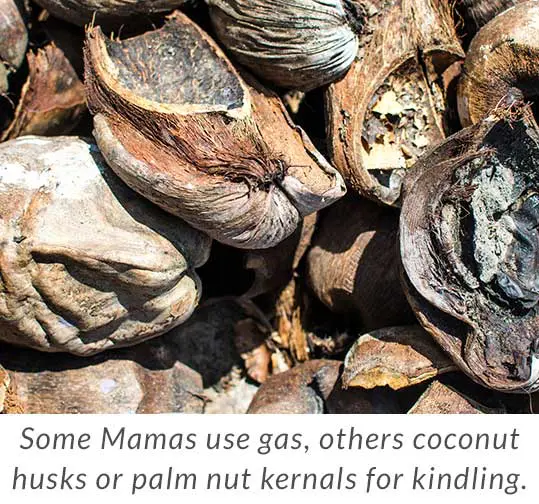
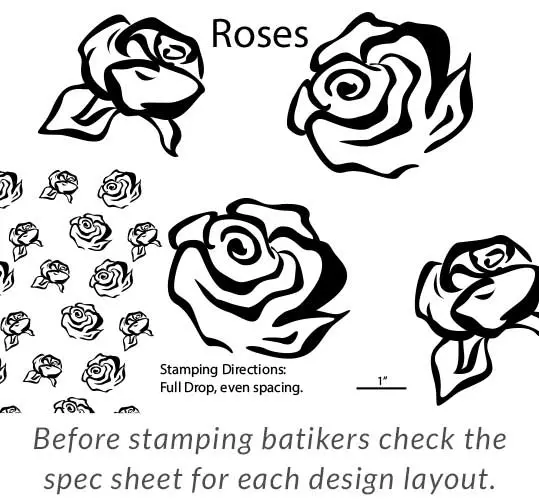
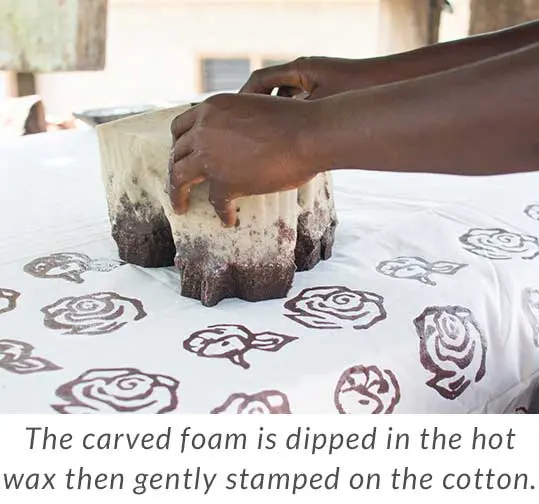


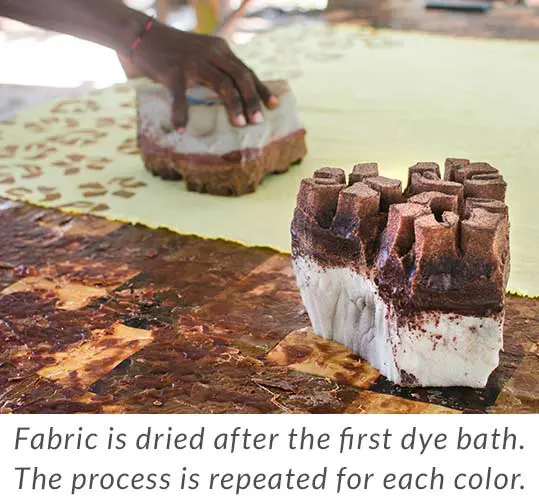
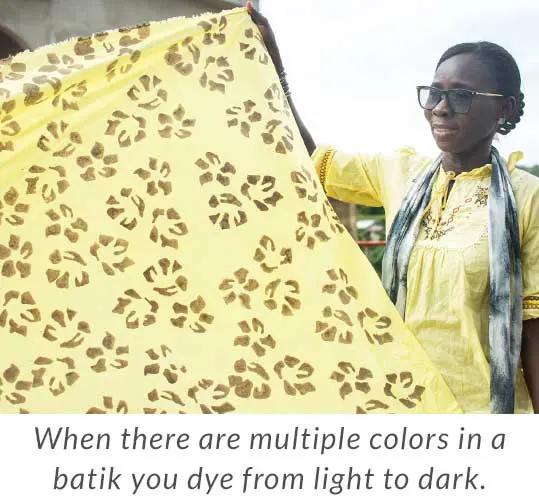

De-Waxing & Cleanup
- When the layers of stamping and dyeing are complete, there are several ways to remove the wax. The most effective way we have found is to boil it off in a large pot of water.
- The batiked fabric is submerged in the water, using a long utensil or stick to stir the pot and melt the wax.
- Once the wax has floated to the top it is skimmed off for reuse. When no more wax boils off the fabric (now colorfast and pre-shrunk) it is again hung to dry.
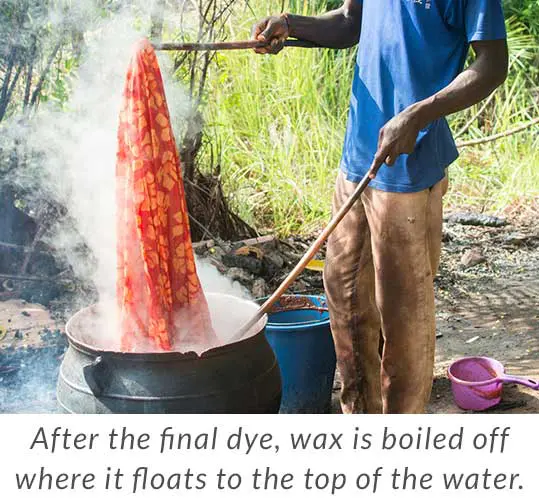

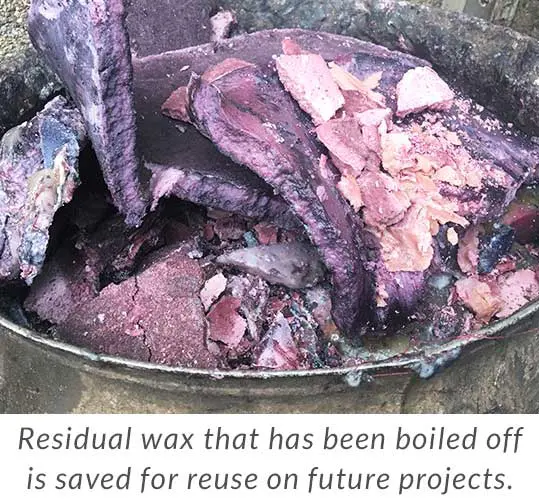

Quality Control
When batiks are brought to the Global Mamas office our team of Quality Control Champions check to make sure the design meets color and layout specifications. Each QC Champion works with specific Mamas so that a relationship develops over time. Although batik is both an art and a science we need the product in our catalog and on our website to match customer expectations. To achieve these goals our team has a set range of tolerances for both batik design layout and color.
- Every batik is first ironed to ensure all wax has been completely removed.
- Extended to its full length, a team of three checks the fabric for issues with the design layout or patches of discoloration. Color is also checked against our ‘perfect color’ dye swatch.
- Based on this evaluation QC staff decides what “class” the batik falls in:
- Class 1: Top production quality– color & stamping is an exact match. Mamas receive a significant bonus for producing Class 1 batiks.
- Class 2: Stamping or dye may be slightly off. This level of error would be visible in the skirt of a dress, but it may still be used for smaller pieces like accessories, or products that allow for more variation.
- Class 3: Although uniquely beautiful, these batiks fall too far outside our tolerances to match any product in our catalog or on our website. This fabric is used to create products for our local shops in Accra and Cape Coast where customers can shop each unique piece in person, giving us more flexibility with the items we offer.
- With Class 3 fabric there is a final important step in which the Mama’s QC champion calls her back into the office to work together and figure out what went wrong. It may be that heavy rain started as she was working or the dye purchased at market was too strong. Based on this conversation the batiker is given more white cotton for a second attempt, or set to be re-trained by a member of our design team to help her perfect the new design.
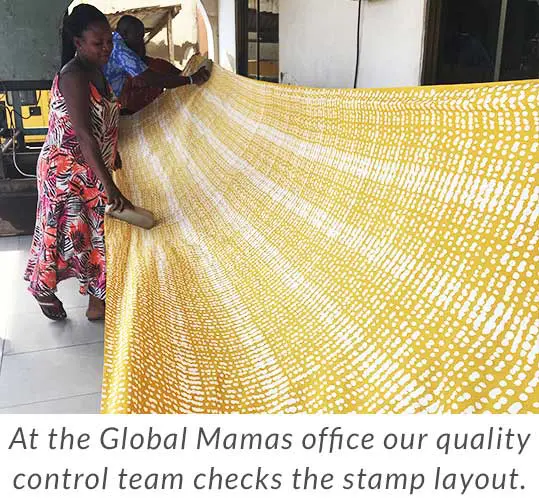
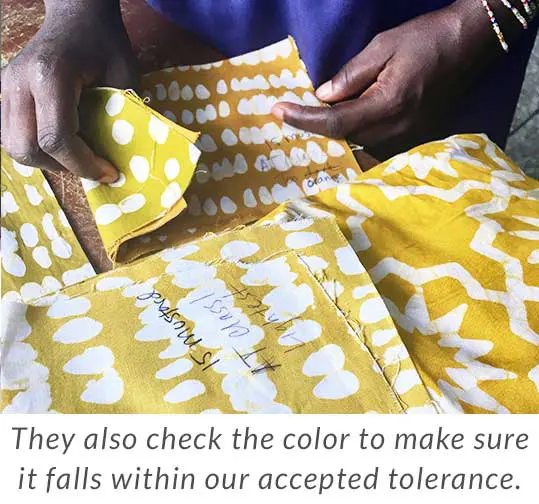
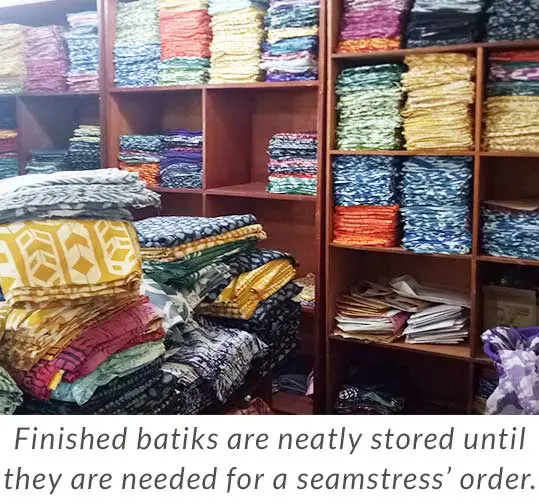


Batiking Mamas
Martha Rhule has been a Global Mama since 2010 and began her business as both a batiker and seamstress, selling products out of her workshop. After Melanie Popowich introduced her to Global Mamas, she consolidated her business to only batiking. Early on in her career with Global Mamas, many of Martha’s products were rejected due to patchy coloring. But other Mamas convinced her to not give up – and she’s glad she didn’t! Martha practiced and developed her skill, and her hard work paid off. She won the Batikers Award at the 2010 Design Competition for her pebble pattern and was named the Global Mama of the Year in 2014. Martha is now able to pay her rent with ease thanks to Global Mamas, and she has taken in one employee and many apprentices. She hopes to continue producing batik for Global Mamas and to earn enough money to help her seven nieces and nephews complete their educations.
“To me, prosperity is working hard and getting more money for my family.”



